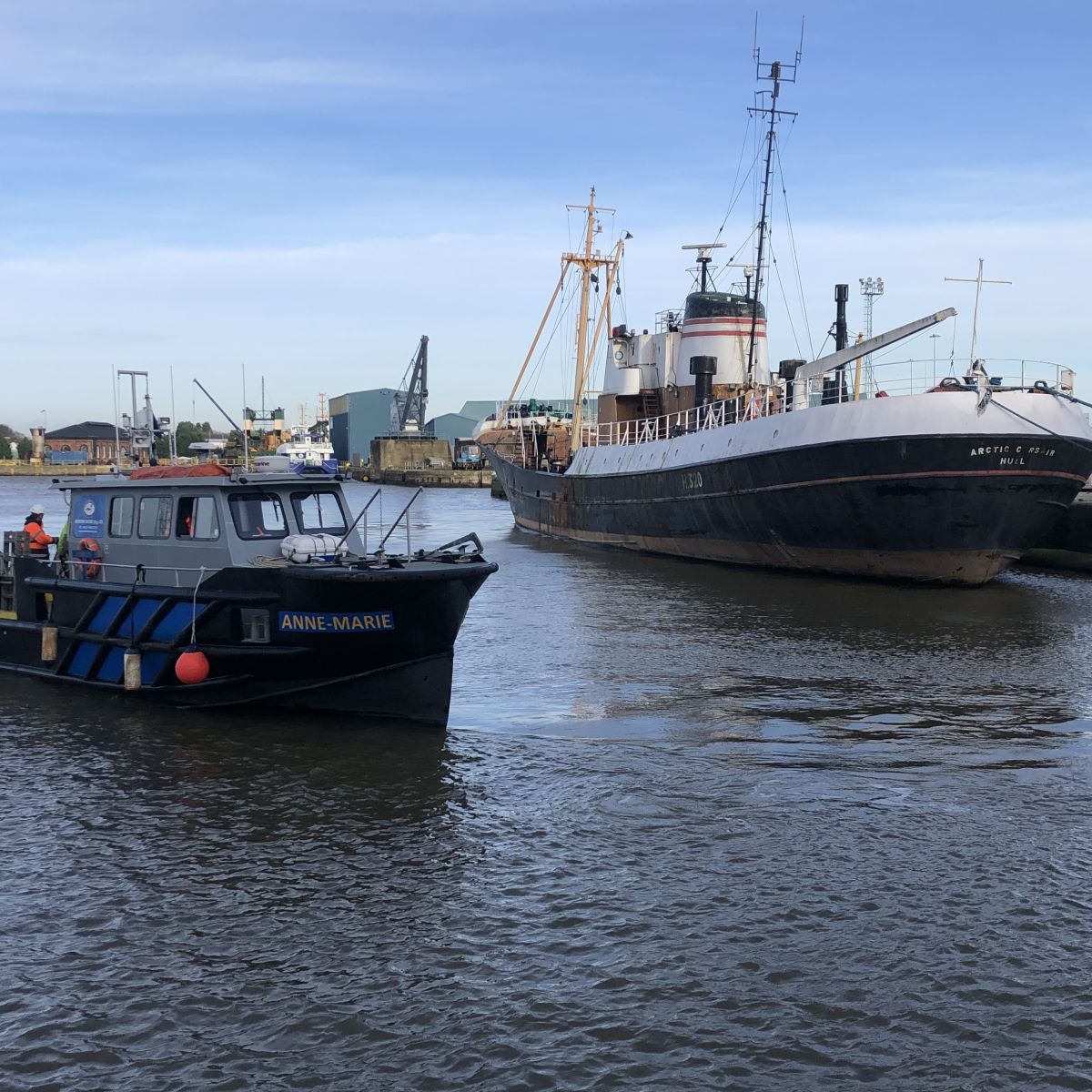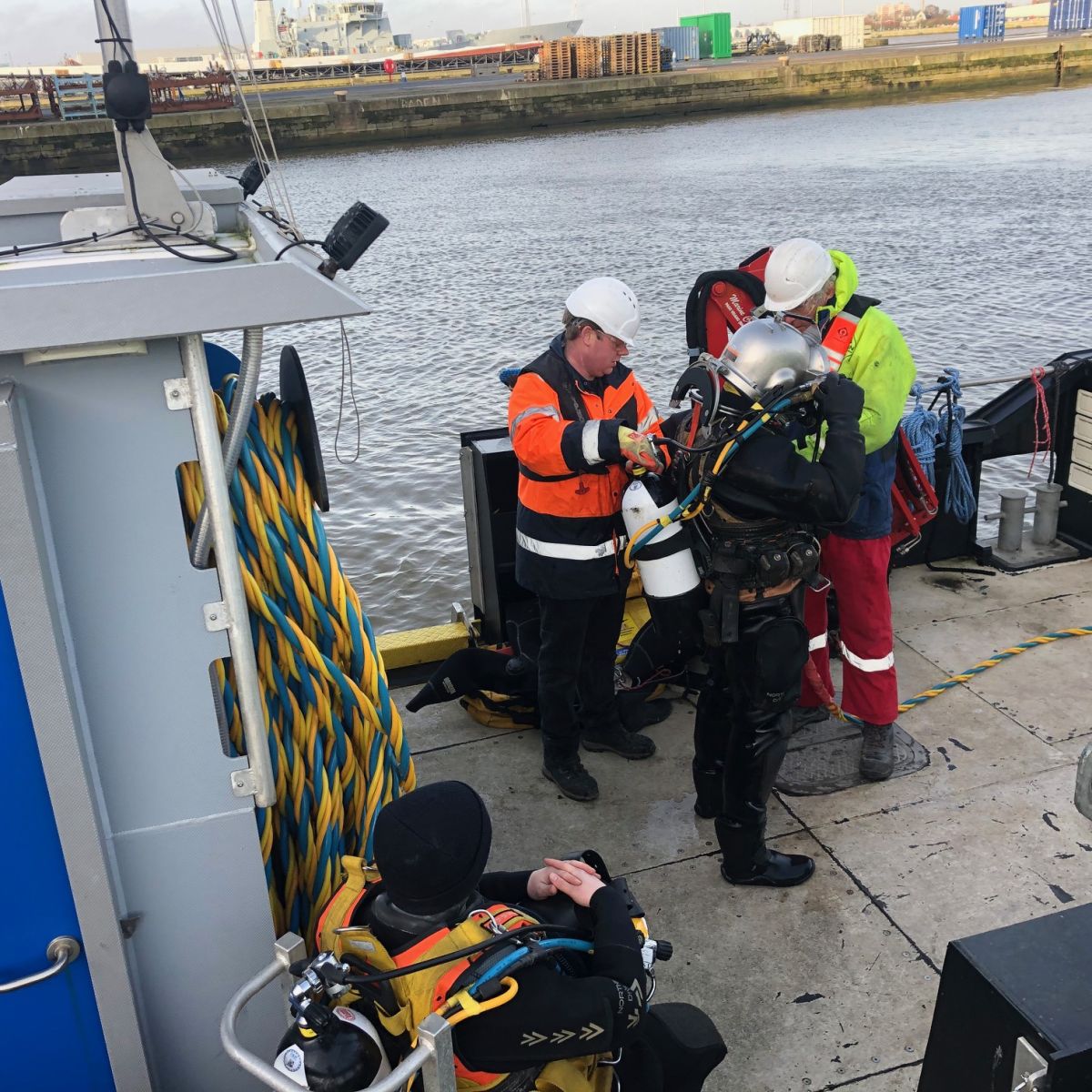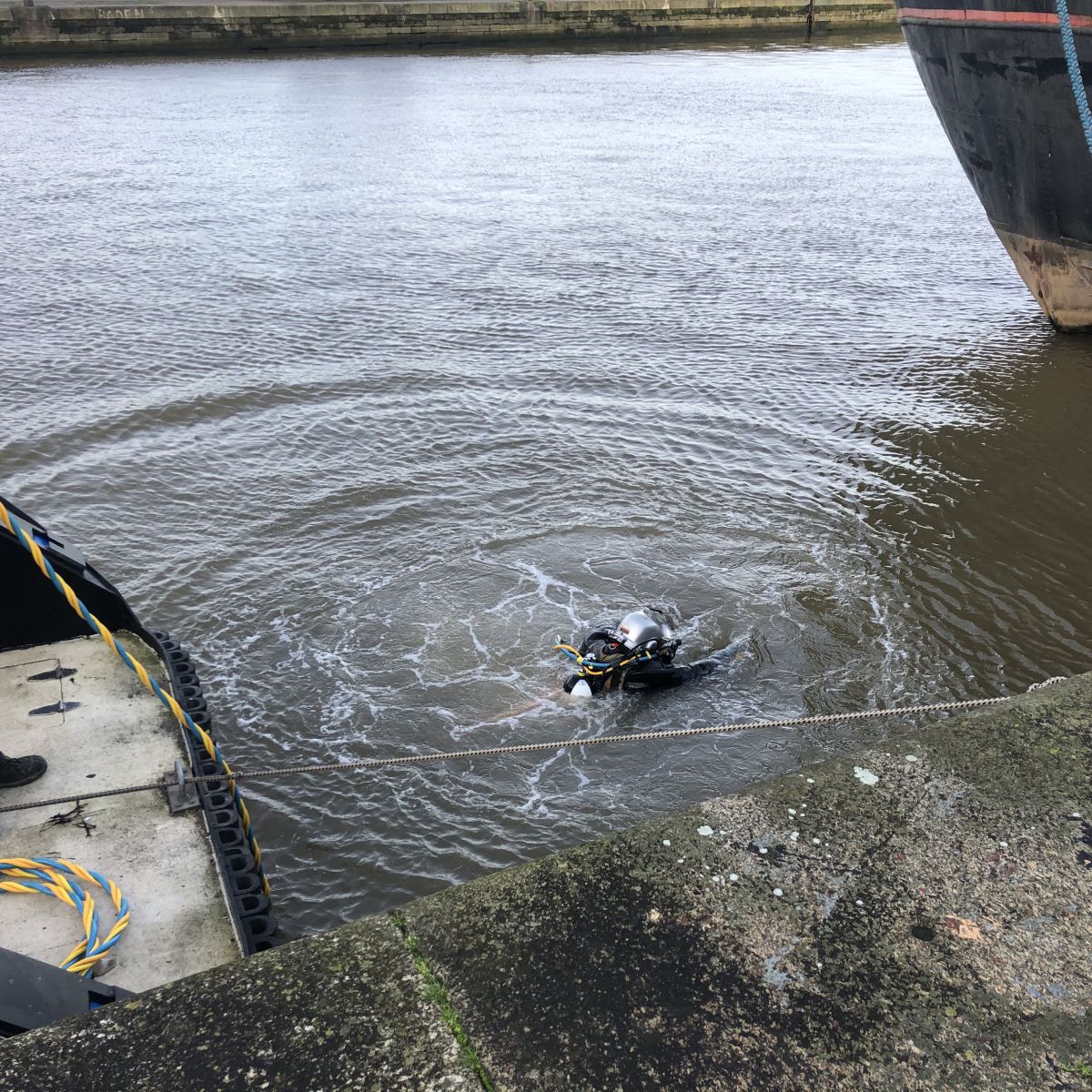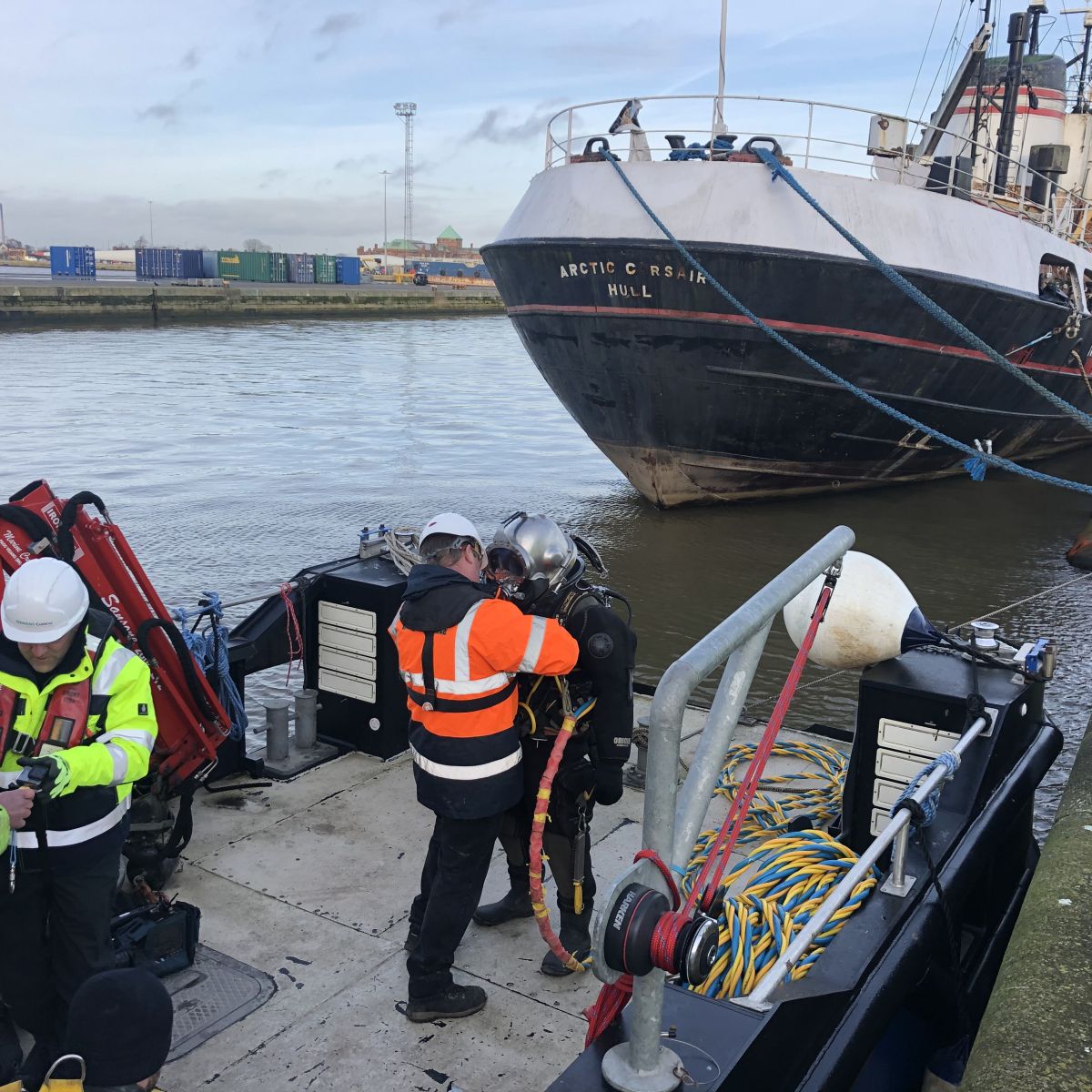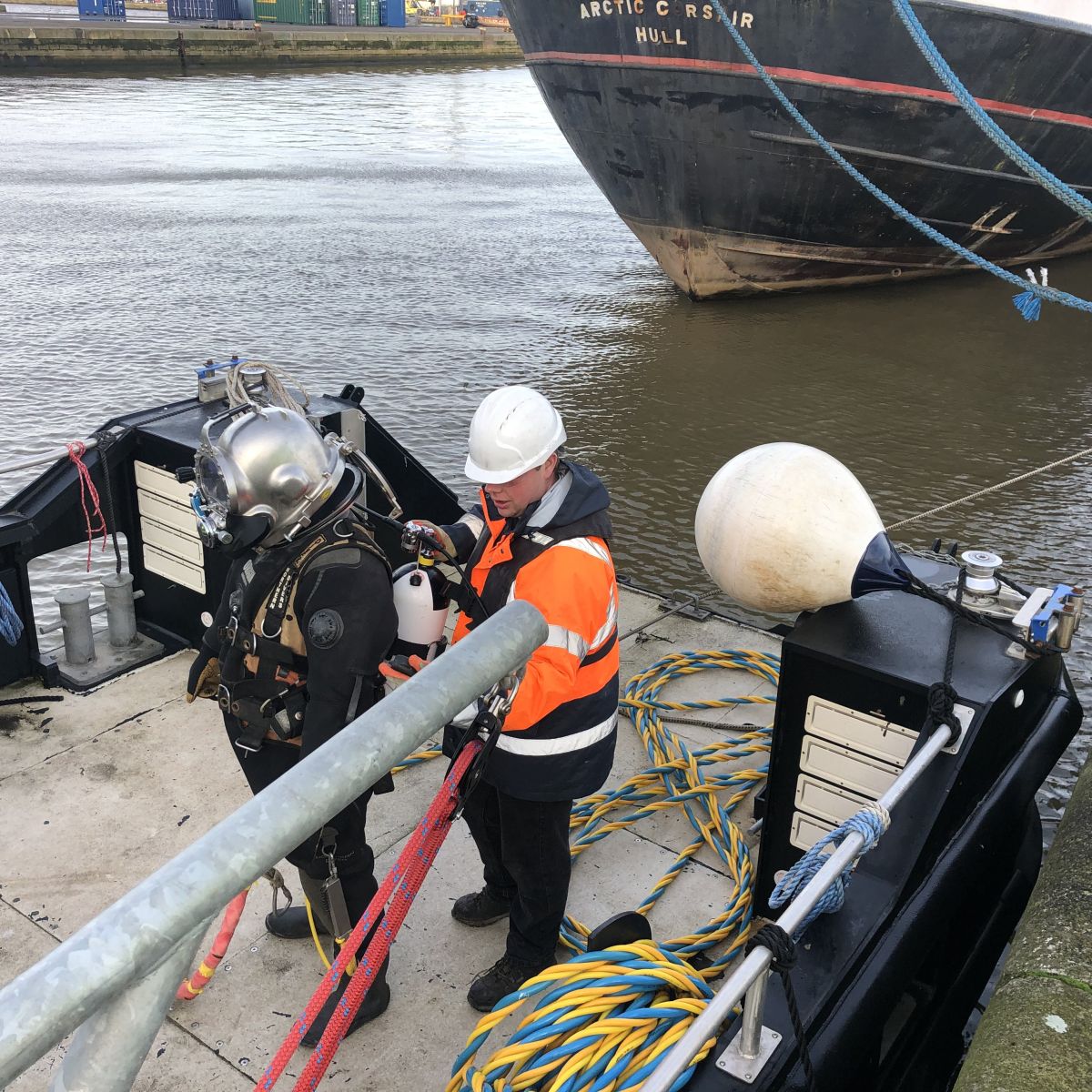17th January 2020
A dive survey of the Arctic Corsair has been completed.
The dive looked at the condition of the historic trawler’s hull as part of detailed assessment of work needed ahead of its major restoration.
The inspection was undertaken by naval architect firm Beckett Rankine, which was appointed by Hull City Council, with the support of Hull firm Northern Divers.
It took two days to complete with a team of five working from a support vessel, moored alongside the Arctic Corsair.

It included a range of ultrasound thickness measurements, the checking and inspection of a propeller as well as checking the condition of the bottom plating that was hidden by silt in its previous location, outside the Museums Quarter on the River Hull.
Councillor Daren Hale, portfolio holder for economic investment, regeneration, planning, land and property, said: “The extensive survey will give us a good indication of the condition and the level of work needed as part of the restoration. Until now, we haven’t been able to access the trawler’s hull due to silt surrounding the trawler at her previous location.
“Our continued thanks go out to Siemens Gamesa and ABP for their continued support and providing a temporary home for the Arctic Corsair, until she moves to a shipyard for restoration later this year.”
John Monasta, senior naval architect at Beckett Rankine, said: “Following the move of the Arctic Corsair from her historic home in the Hull river, we wanted to complete our ongoing assessments of her condition to best prepare the vessel for the next stages of her journey.
“There are parts of the hull that couldn’t be reached before, and we are now eager to inspect and assess these now that she is in the Alexandra Dock. One mystery we are eager to uncover is whether her propeller is still attached to the vessel and its condition.”

